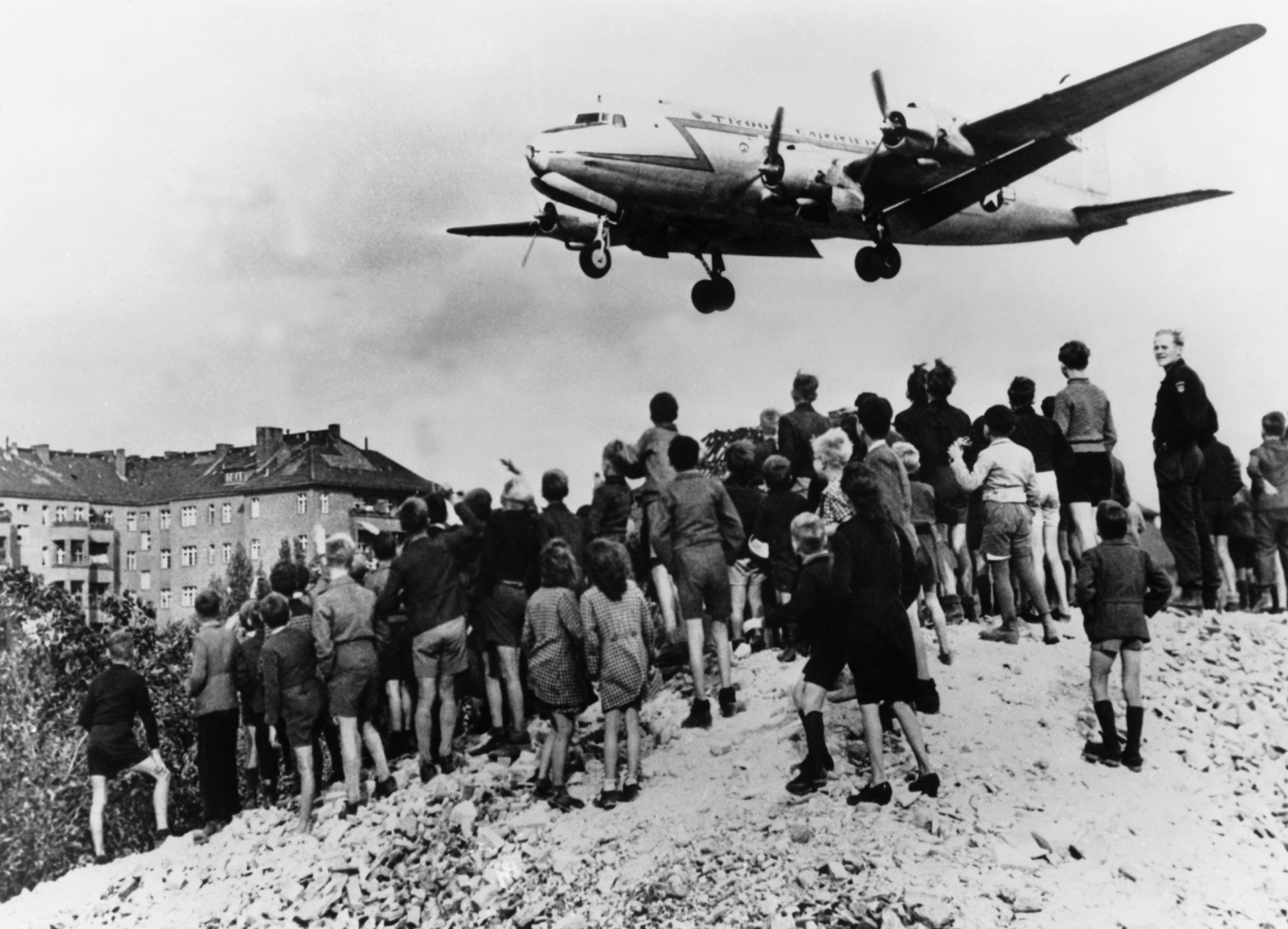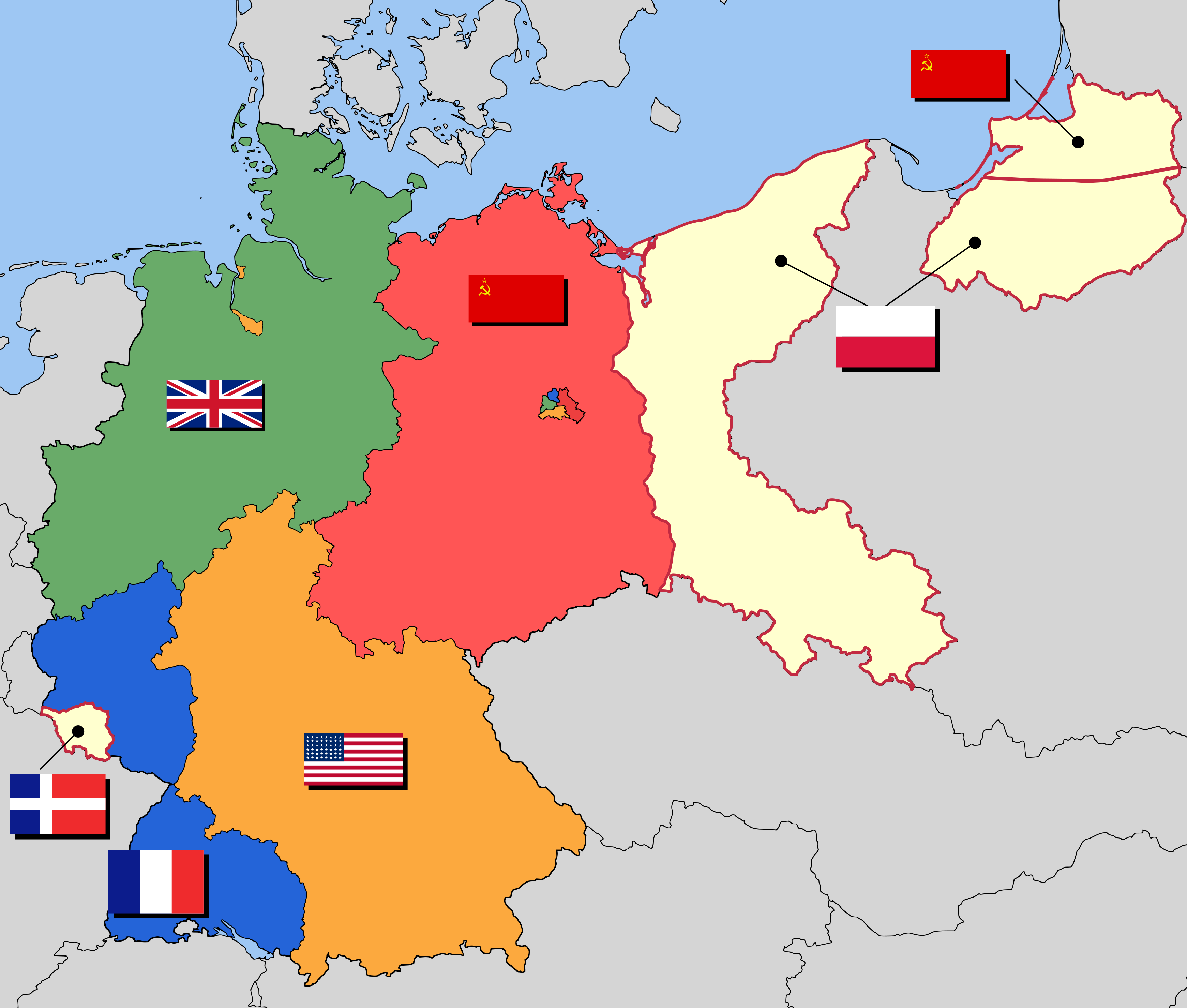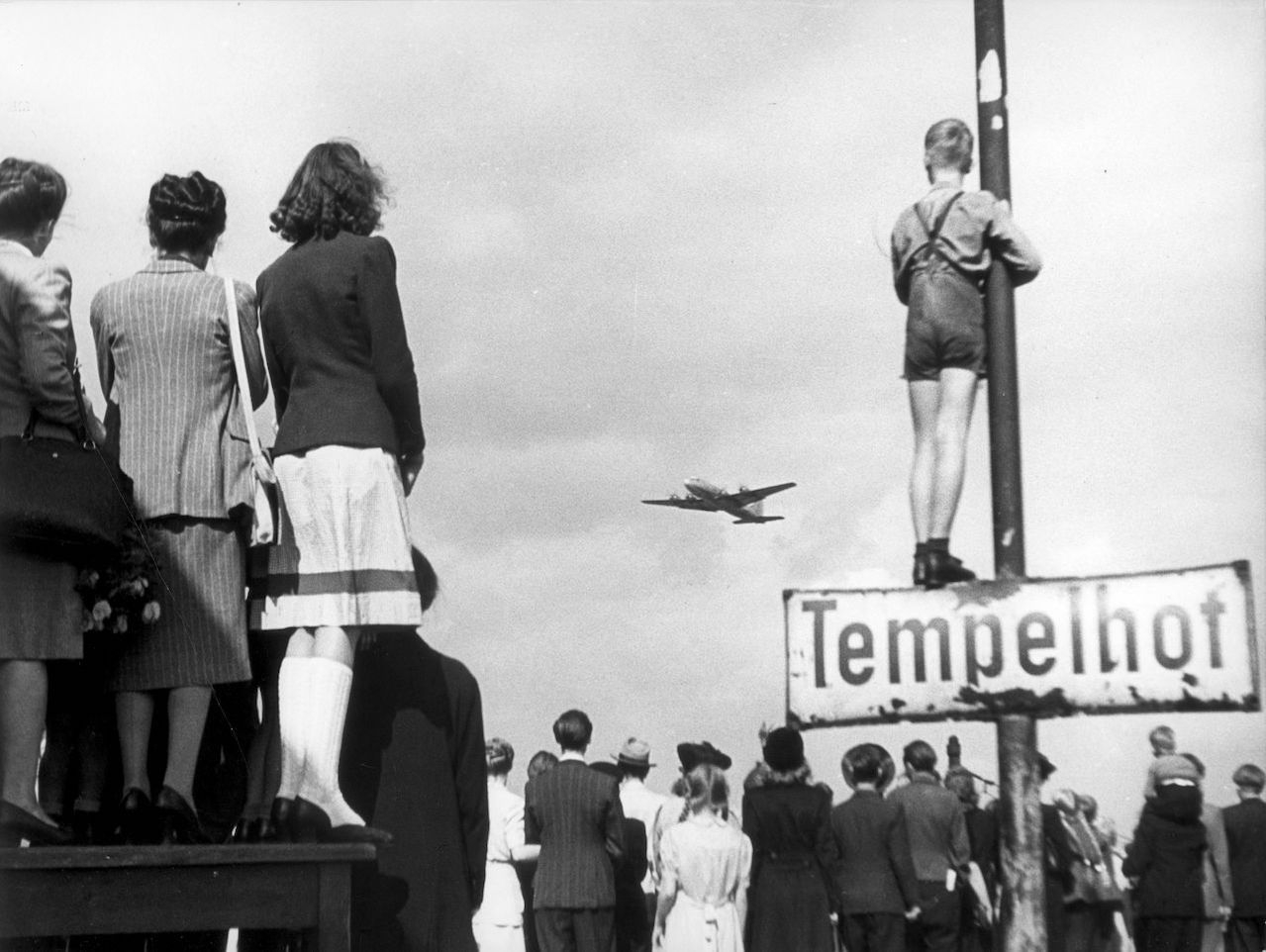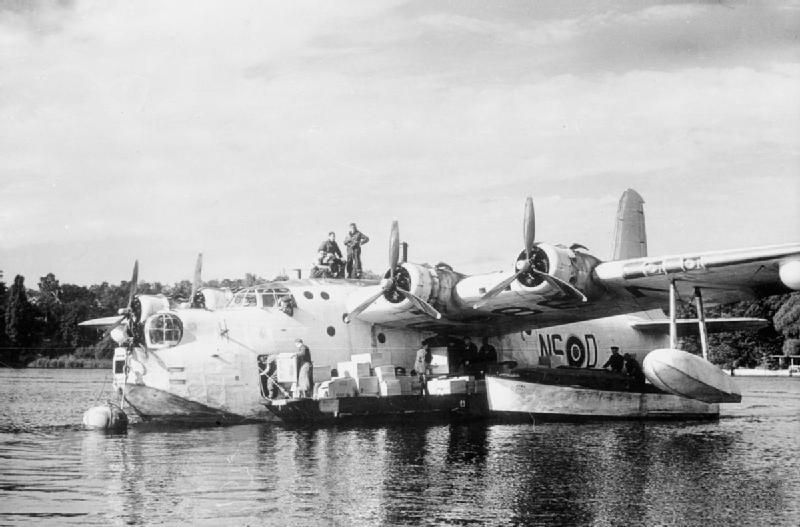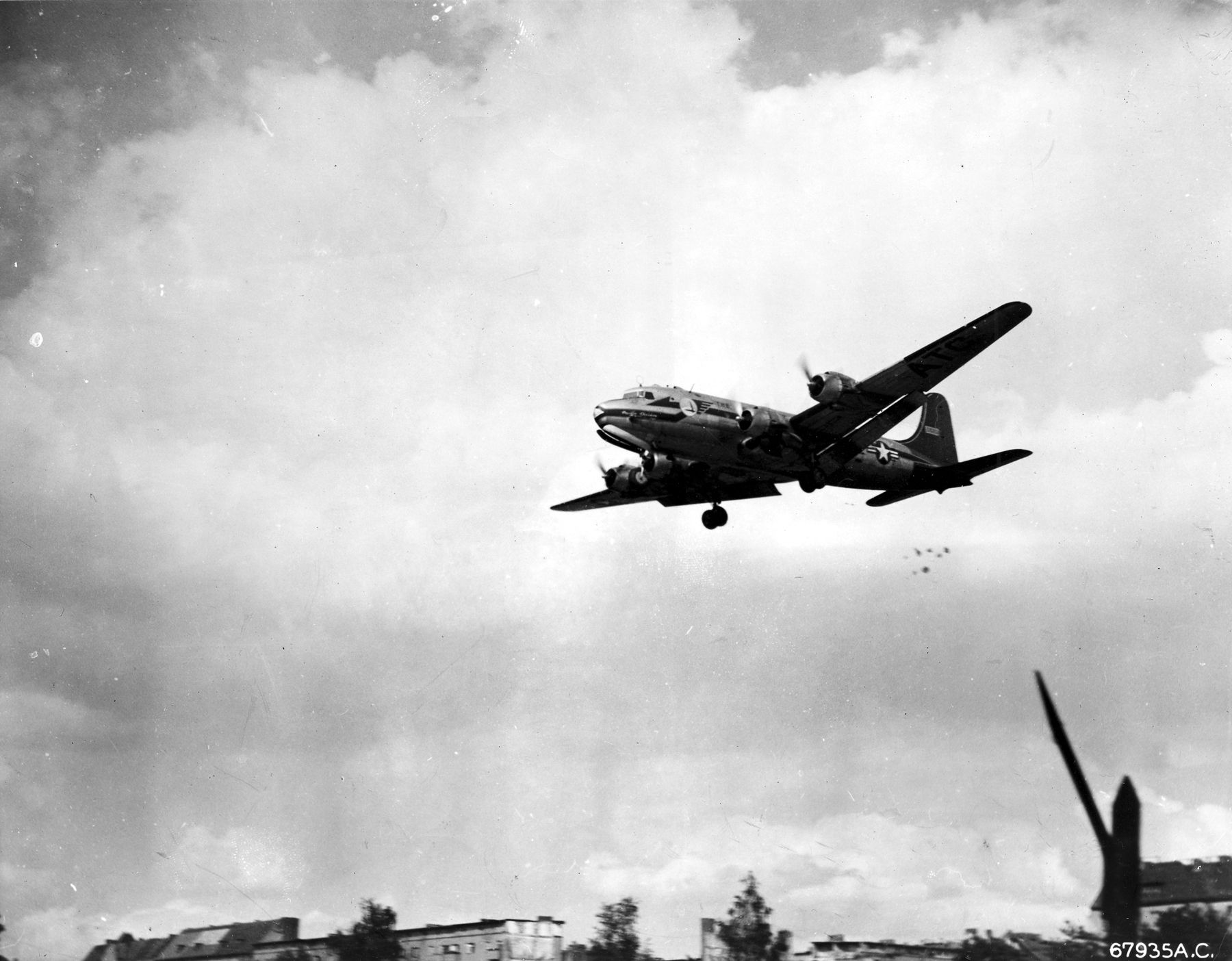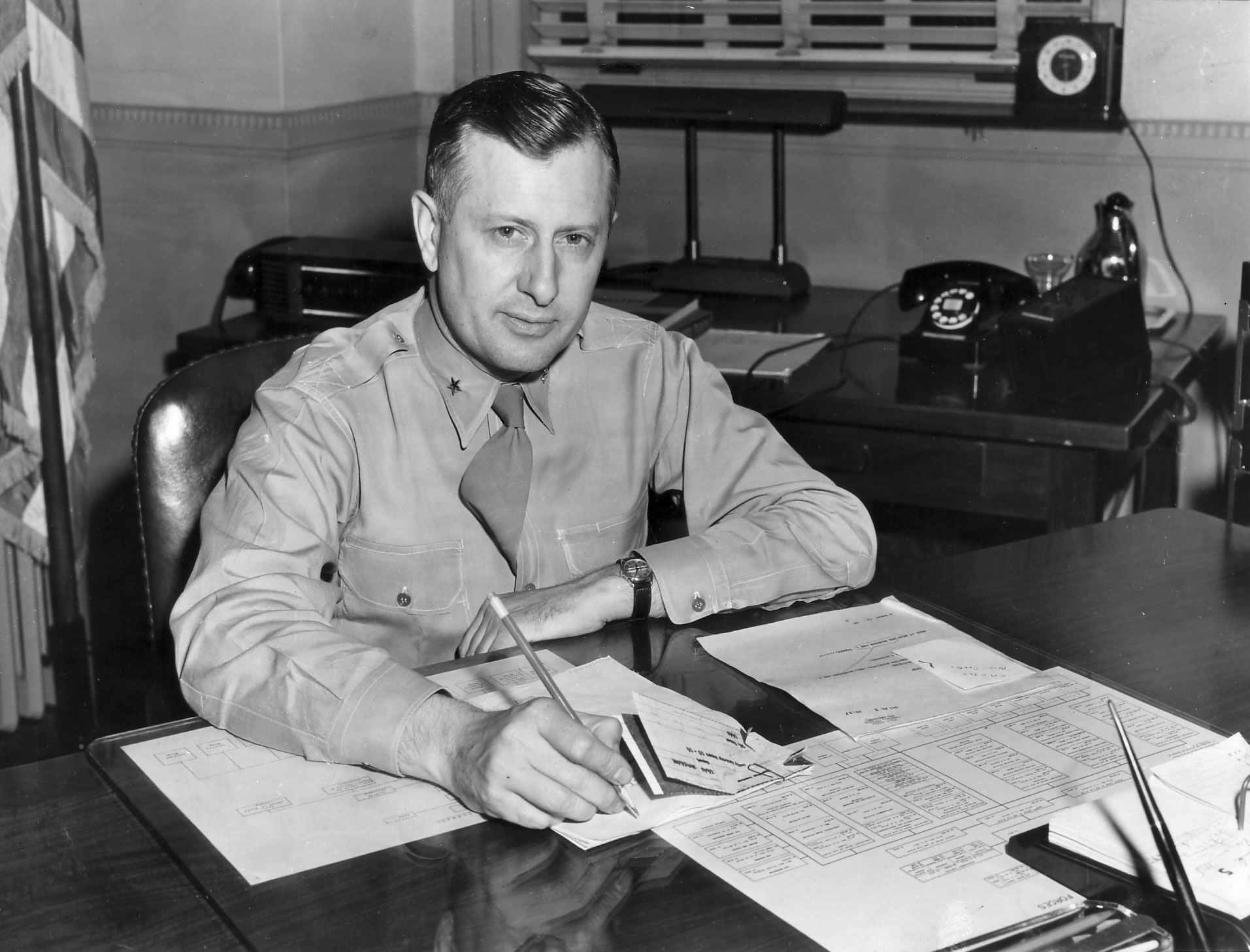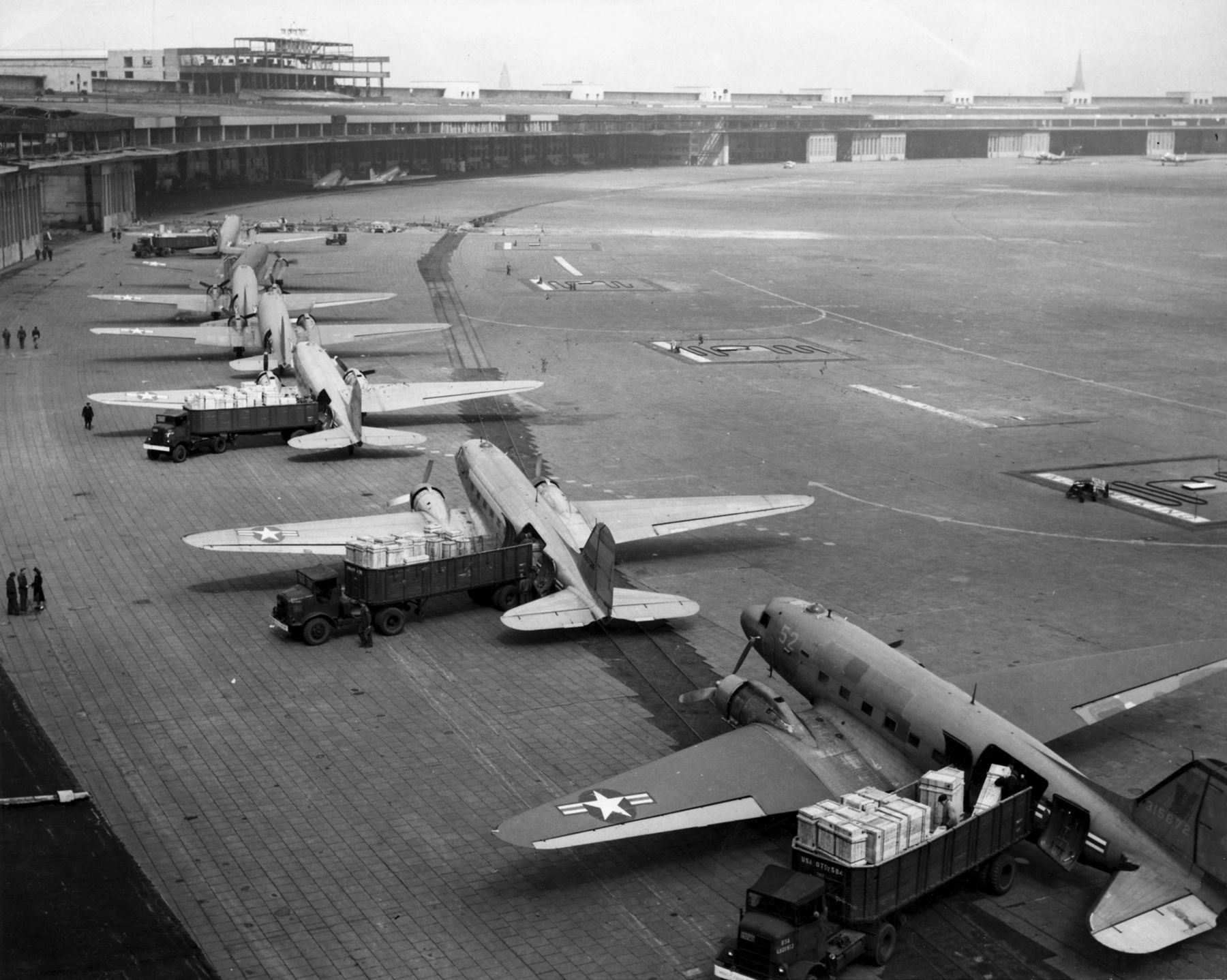The Berlin airlift was a significant effort by the United States, Great Britain, and France to deliver supplies to their sectors in West Berlin, after the Soviet Union blocked land access. The airlift lasted for 15 months in 1948 and 1949, and saw as many as 1,400 aircraft a day landing at Berlin Tempelhof airport. The blockade and airlift were one of the first major international crises of the Cold War.
The post-war division of Germany
After the end of the Second World War in 1945, Germany was divided into four sections. Each was occupied by one of the Allied powers - the United States, the United Kingdom, France, and the Soviet Union. The capital (and seat of the Allied Control Council) was Berlin, which sat well within the Soviet Union's occupation zone. It was likewise divided into four sectors, controlled by each of the Allies.
Rights of access through the Soviet zone were a problem right from the start - and long before the blockade and airlift. There was an assumption, rather than a formal agreement, during the division that the Soviet Union would permit access to the western sectors of the city. Access was allowed by rail and through limited approved air routes from West German cities, and requests for further expansion were denied. In addition, the Soviet Union soon started to limit deliveries of goods (including agricultural products) into the other sectors.
The Berlin Blockade
The situation worsened in early 1948, with the three non-Soviet governments beginning closer alignment and economic development of their sectors. This led to the introduction of the new Deutsche Mark currency as the standard currency across all four sectors (this was formally announced on June 18th 1948). The Soviet Union opposed this and began strict controls on transportation and freight into the city in response.
On June 24th the Soviet Union cut all connections between the Soviet sector and the other sectors and stopped all land transport through the Soviet zone into these sectors. This effectively began the blockade of the city that was to last until May 1949.
Starting an airlift operation
With the city blockaded, the Allies needed to find a way to supply their city sectors. With road and rail transport blocked by the Soviet Union, air was the only remaining option. An air corridor into Berlin was part of the original division agreements, and this remained open.
The UK Royal Air Force and the US Air Force quickly organized a joint air operation to take supplies into Berlin. Rationing in the city was introduced to lessen the requirements, but there was still a massive need for supplies of both food and fuel - estimated to be around 5,000 tons per day. To put this into perspective, the Avro York (the largest aircraft used by the UK RAF during the blockade) could carry around 10 tons.
Postwar cuts had reduced the size of the military and air force, so this was no easy task. The US military began airlift operations on June 25th, with the UK RAF starting on June 29th. All parties expected the situation to last just weeks, not a full year.
Flying a range of aircraft into Berlin Tempelhof
Berlin Tempelhof was the main airport base throughout the airlift. The US military operated a number of C-47 aircraft (the military version of the Douglas DC-3) and four engined C-54 aircraft (developed from the Douglas DC-4), mainly from its German bases in Wiesbaden and Rhein-Main.
The UK RAF operated a large fleet of Dakotas (around 150 aircraft) and a smaller number of Avro York aircraft (a design based on the Lancaster bomber aircraft). The RAF also flew Short Sunderland flying boats to a base on the Havel River.
Berlin Tegel airport joined the airlift operation from November 1948. The area was heavily bombed during the war, but plans to change its use were dropped with the start of the blockade, and the French military opened the airport to assist with the airlift. The French operated Junkers Ju-52 aircraft here, but their involvement was limited due to commitments in the Far East. Berlin Tegel also became a base for US C-54 operations.
Efficient airport operations
By July, it became clear that the airlift would be a long term operation, and that capacity would need to increase further. US Air Force officer William Henry Tunner was brought in to better manage operations at Tempelhof. He had previously served in the India-China division and was responsible for the organization of the Hump supply route into China during the Second World War. This was a similar major airlift operation, flying over the mountains between India and China, to supply Chiang Kai-shek's forces and civilians in Western China after the Japanese cut off land routes.
Tunner made many changes. Operationally, a single point of control was established for all air forces involved. Larger aircraft were used (specifically the C-54) to bring in more cargo per landing. Aircraft approach and separation procedures were altered to increase flow and safety, with no stacking and all aircraft flying under IFR rules. And aircraft turnaround time was decreased, with larger, civilian ground crews.
These changes saw Tempelhof handling over 1,400 flights a day at the peak of the airlift. November and December 1948 proved to be the toughest months, with few aircraft managing the run in bad weather conditions. These were tough times for the city, but supply picked up again in 1949.
Ending the airlift
Negotiations between the four powers to end the blockade began in April 1949. An agreement was reached on May 4th and the Soviet blockade was lifted on May 12th. From that time, road and rail supplies could once again enter Berlin. Air operations continued for several more months, although at a lesser pace, to help build up surplus supplies in the city. The airlift ended finally on September 30th 1949.
The Berlin blockade and airlift was an important event in the aftermath of the Second World War and the early days of the Cold War. Feel free to discuss the events of this, or the aircraft involvement, further in the comments.

